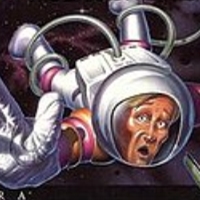NASA fixes Voyager 1 deep space probe by firing th
Post# of 63910

NASA has been able to extend the life of one of its space probes travelling 13 billion miles from Earth by firing up dormant thrusters not used for 37 years.
Voyager 1 was launched in September 1977 and is the only human-made object in interstellar space - the environment between the stars.
But after four decades of exploration which have taken in fly-bys of Jupiter and Saturn, engineers found that the primary thrusters which orient the space probe had severely degraded.
So, in an attempt to keep Voyager 1 operable, NASA tested four thrusters on the back side of the spacecraft which have not been used 1980.
After waiting more than 19-and-a-half hours for test results to travel through space and reach an antenna in California, engineers found the dormant thrusters had worked "perfectly".
NASA now plans to use the trajectory correction manoeuvre thrusters permanently from January - giving Voyager 1 an extra two to three years life.
NASA Jet Propulsion Laboratory engineer Todd Barber said: "The Voyager team got more excited each time with each milestone in the thruster test.
"The mood was one of relief, joy and incredulity after witnessing these well-rested thrusters pick up the baton as if no time had passed at all."
JPL chief engineer Chris Jones added: "The Voyager flight team dug up decades-old data and examined the software that was coded in an outdated assembler language, to make sure we could safely test the thrusters."
NASA says it will likely perform a similar thruster test on Voyager 2, which was launched two weeks before its twin in August 1977 and is on course to enter interstellar space in the next few years.
Both plutonium-powered spaceships will continue until they run out of fuel, and will then orbit in the centre of the Milky Way galaxy.
 (1)
(1) (0)
(0)